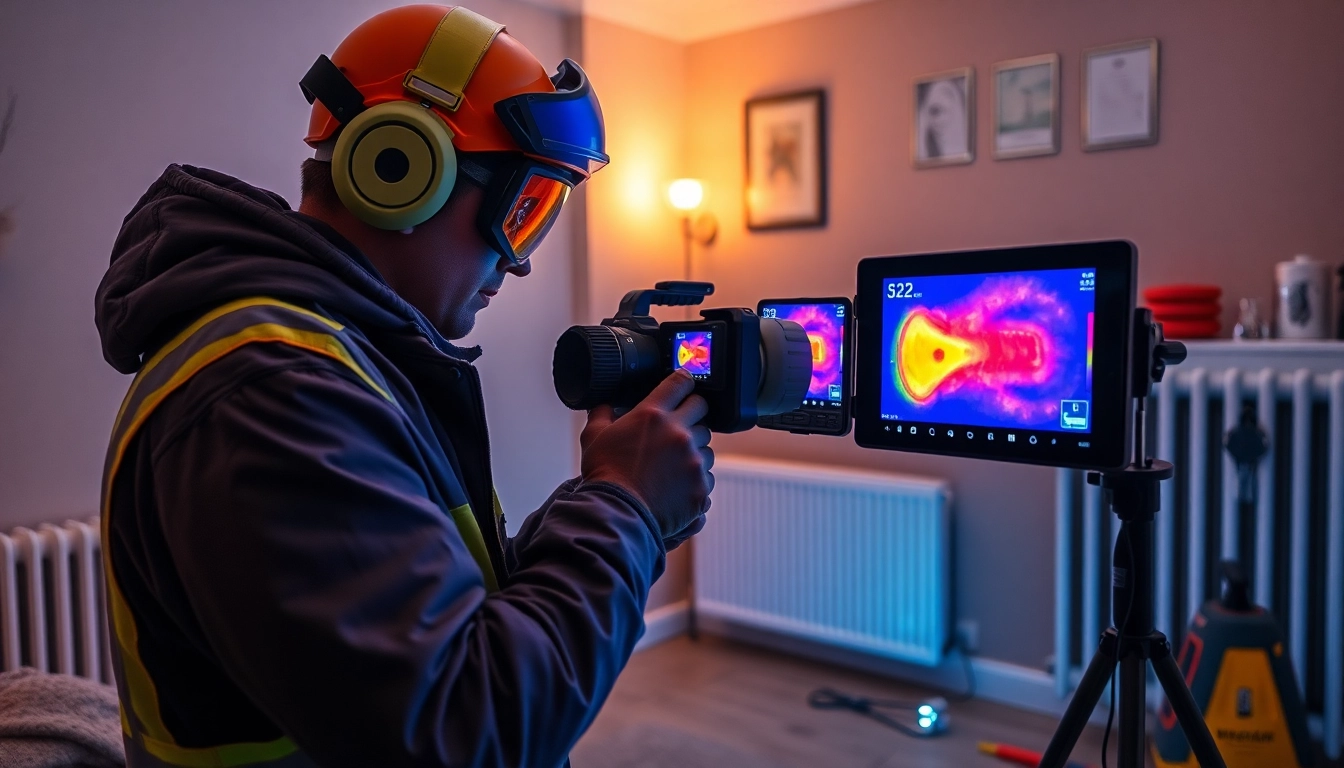Understanding Central Heating Hidden Leaks
Central heating hidden leaks can be a significant concern for homeowners. These leaks often go unnoticed until they cause serious damage or lead to costly repairs. Understanding what a central heating hidden leak is, along with its symptoms and potential consequences, should be a priority for anyone relying on a heating system. When exploring options, central heating hidden leak detection methods can be essential for maintaining a well-functioning home.
What is a Central Heating Hidden Leak?
A central heating hidden leak refers to any water loss from a heating system that cannot be easily seen or detected. Unlike visible leaks from radiators or valves, hidden leaks may occur within walls, floors, or underground piping. These leaks can stem from various issues, such as corroded piping, faulty fittings, or structural damage. Detecting these leaks early is vital to prevent catastrophic failures and extensive damage to your property.
Common Symptoms and Signs
Identifying a hidden leak can be tricky, but several tell-tale signs can indicate a problem within your central heating system:
- Unexplained Water Puddles: Any pooling of water near heating units, underfloor areas, or walls may indicate a hidden leak.
- Drop in Boiler Pressure: A continual need to top up pressure can suggest water loss.
- Damp Patches: Look for signs of moisture or mold on walls or ceilings.
- Increased Energy Bills: Unexplained hikes in your energy bills can be a result of inefficient heating due to leaks.
- Cold Spots on Radiators: These may indicate circulation problems possibly caused by leaks in the system.
Consequences of Ignoring Hidden Leaks
The risks of ignoring a hidden leak in your central heating system extend beyond mere inconvenience. Some potential consequences include:
- Structural Damage: Prolonged exposure to moisture can weaken structural integrity, leading to costly repairs.
- Mold Growth: Hidden leaks can create damp environments conducive to mold, which poses health risks.
- Property Devaluation: Untreated water damage can significantly decrease the value of your home.
- Increased Heating Costs: Damaged or inefficient systems require more energy, leading to higher utility bills.
Advanced Detection Technologies
Fortunately, advancements in technology have made detecting hidden leaks in central heating systems easier and more accurate than ever. Utilizing innovative detection methods is crucial for timely intervention and repair.
Thermal Imaging: How It Works
Thermal imaging is a non-invasive method that uses infrared cameras to detect temperature variances in wall surfaces caused by leaks. By visualizing temperature differences, technicians can pinpoint hidden leaks without damaging your property.
Pressure Testing Methods Explained
Pressure testing involves isolating sections of the heating system and monitoring the pressure. A significant drop in pressure indicates a possible leak in the isolated area, allowing for targeted inspection and repair.
Acoustic Devices for Leak Identification
Acoustic leak detection employs specialized devices to amplify sounds made by escaping water or gas within pipes. This method can effectively locate leaks even when they are buried deep underground or hidden behind walls.
Identifying Central Heating Hidden Leak Causes
Understanding the root causes of hidden leaks can aid in prevention and maintenance. Here are some common culprits:
Common Culprits of Hidden Leaks
- Corroded Pipes: Aging or poorly maintained pipes are at a higher risk of developing leaks.
- Faulty Connections: Joint fittings that are improperly tightened or installed can become weak points.
- Ground Movement: Shifting soil or foundation issues can place undue stress on piping.
Impact of Age and Condition on Leak Occurrence
As heating systems age, they become more susceptible to leaks. Besides the material wear and tear, older systems may not be equipped to handle modern heating demands, leading to increased pressure and potential failures.
Seasonal Effects on Heating Systems
Seasonal changes can also impact the likelihood of leaks. For instance, freezing temperatures can cause pipes to contract and then expand when thawed, leading to potential ruptures. Regular inspections before winter can help prevent such issues.
Emergency Response and Repair Strategies
Once a leak is detected, swift action is imperative to prevent further damage. Having a clear strategy can make this process more effective.
Immediate Steps to Take When a Leak is Detected
- Turn Off the Boiler: Immediately cut power to the heating system to minimize risk.
- Drain the System: If safe to do so, draining the system can mitigate water damage.
- Contact Professionals: Engage with certified leak detection experts as soon as possible to assess and rectify the issue.
Professional Repair vs. DIY Solutions
While some may consider fixing leaks themselves, hiring a professional is generally the safest option, especially with hidden leaks. Experts possess the tools and knowledge to detect and repair leaks precisely, reducing risks of further damage.
Importance of Timely Intervention
Addressing leaks promptly can save homeowners significant money in repair costs and prevent extensive property damage. Timely intervention also reduces health risks associated with mold and mildew from prolonged exposure to moisture.
Preventative Measures and Maintenance
Preventing hidden leaks is achievable through regular maintenance and proactive measures. Keeping your heating system in optimal condition can significantly reduce the likelihood of leaks.
Regular System Inspections and Maintenance Tips
- Annual Checks: Schedule yearly inspections with a qualified technician to catch issues early.
- Monitor Pressure Levels: Regularly check the pressure gauge on your boiler to ensure it is within normal ranges.
- Inspect Visible Components: Look for signs of corrosion or wear on visible piping and connections.
Utilizing Leak Detectors for Early Warnings
Investing in leak detection alarms can provide peace of mind. These devices monitor for moisture and alert homeowners to potential issues before they escalate.
Future Trends in Leak Prevention Technology
As technology evolves, so do leak detection and prevention methods. Innovations like smart water monitoring systems and AI-powered detection tools are paving the way for even more effective solutions, ensuring homes remain safe and efficient.
